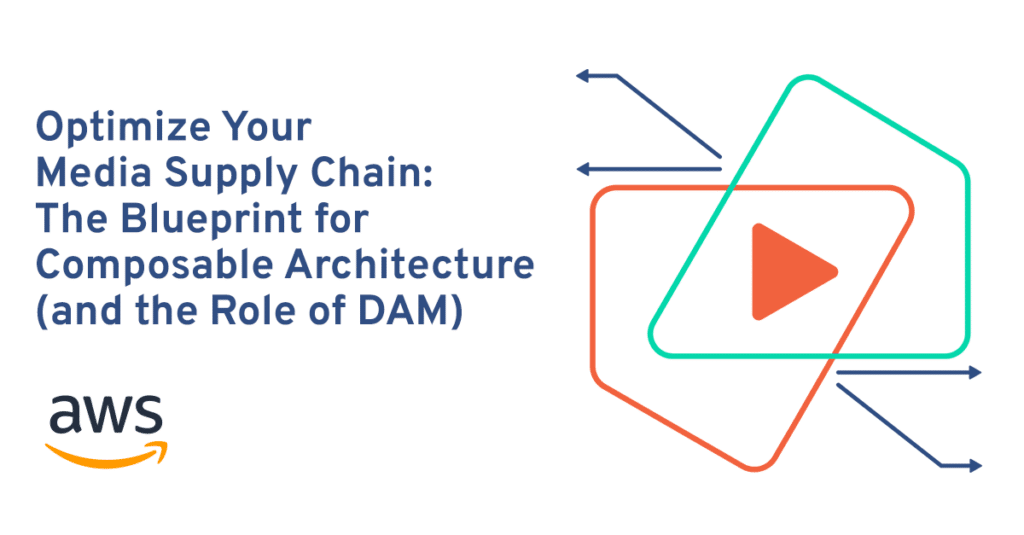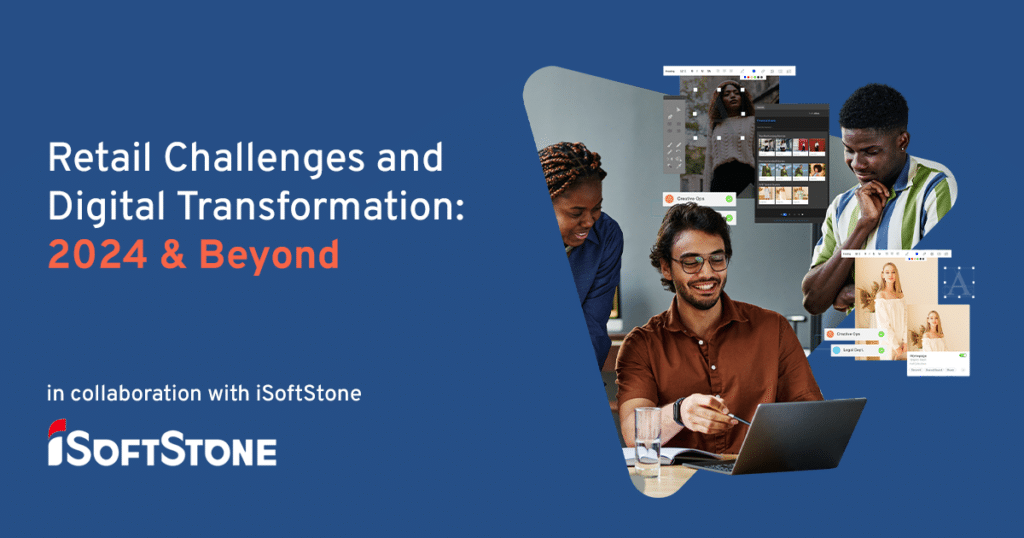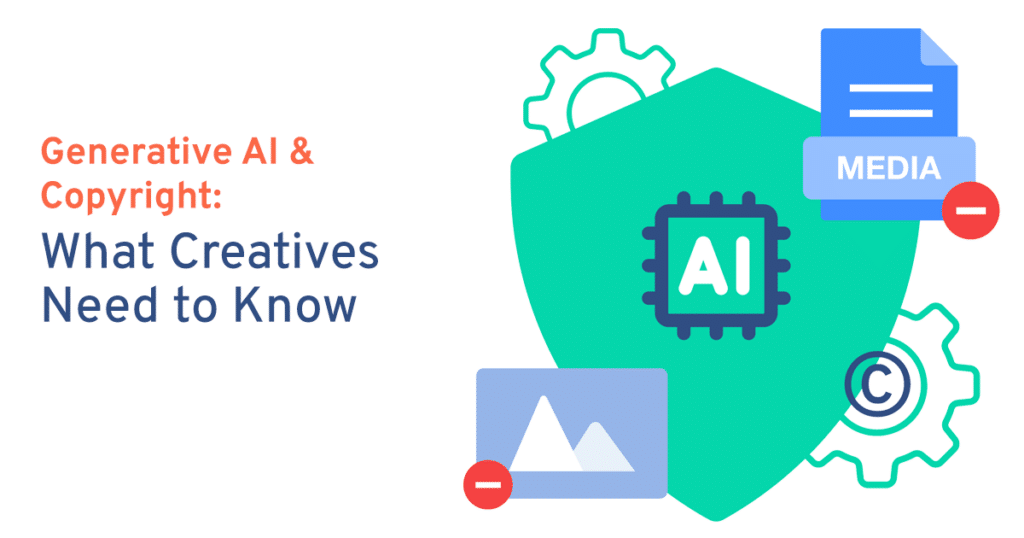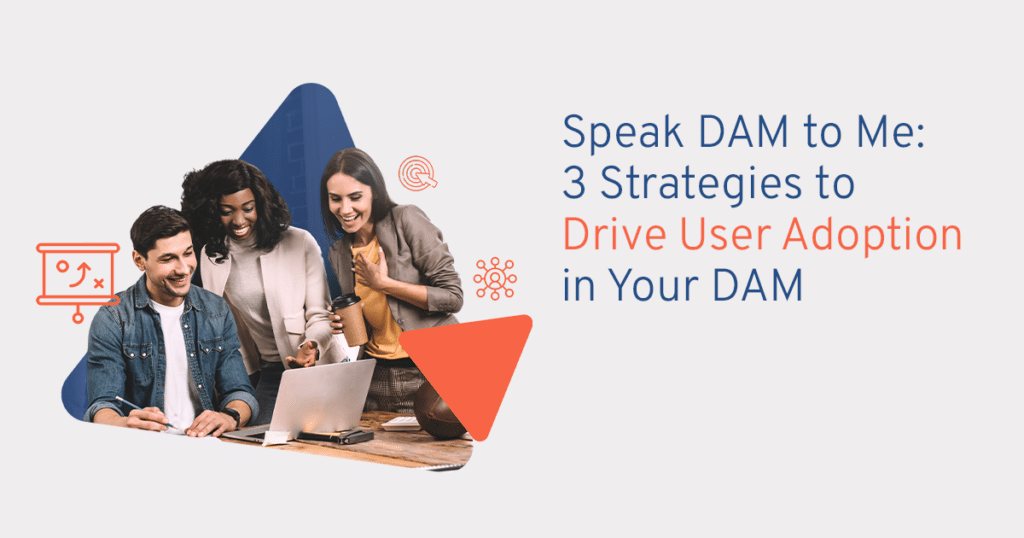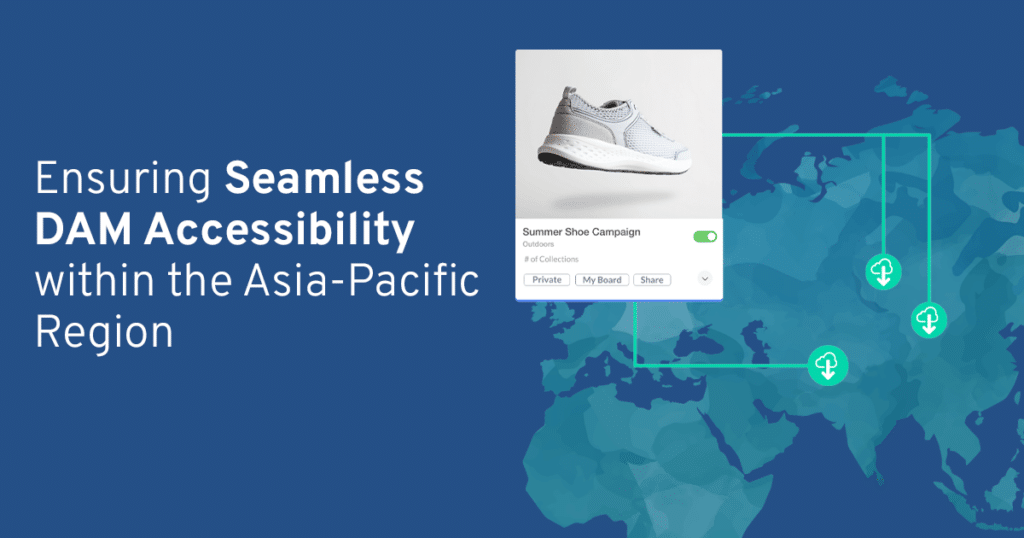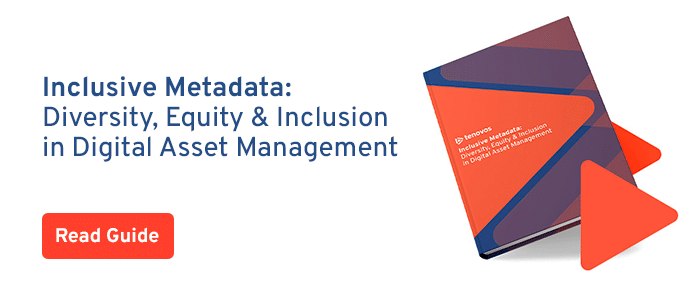Generative AI represents a shift in the field of artificial intelligence, offering content creation capabilities that were previously unimaginable – forcing us to contemplate the privacy implications that come about as a result.
Generative AI employs advanced algorithms and models, utilizing extensive training sets to create novel content based on user input. This capability, rooted in learning intricate data patterns, opens up a world of possibilities for generating ideas, content, and creative assets, significantly streamlining content creation.
Not familiar with the potential of generative AI? More on that here.
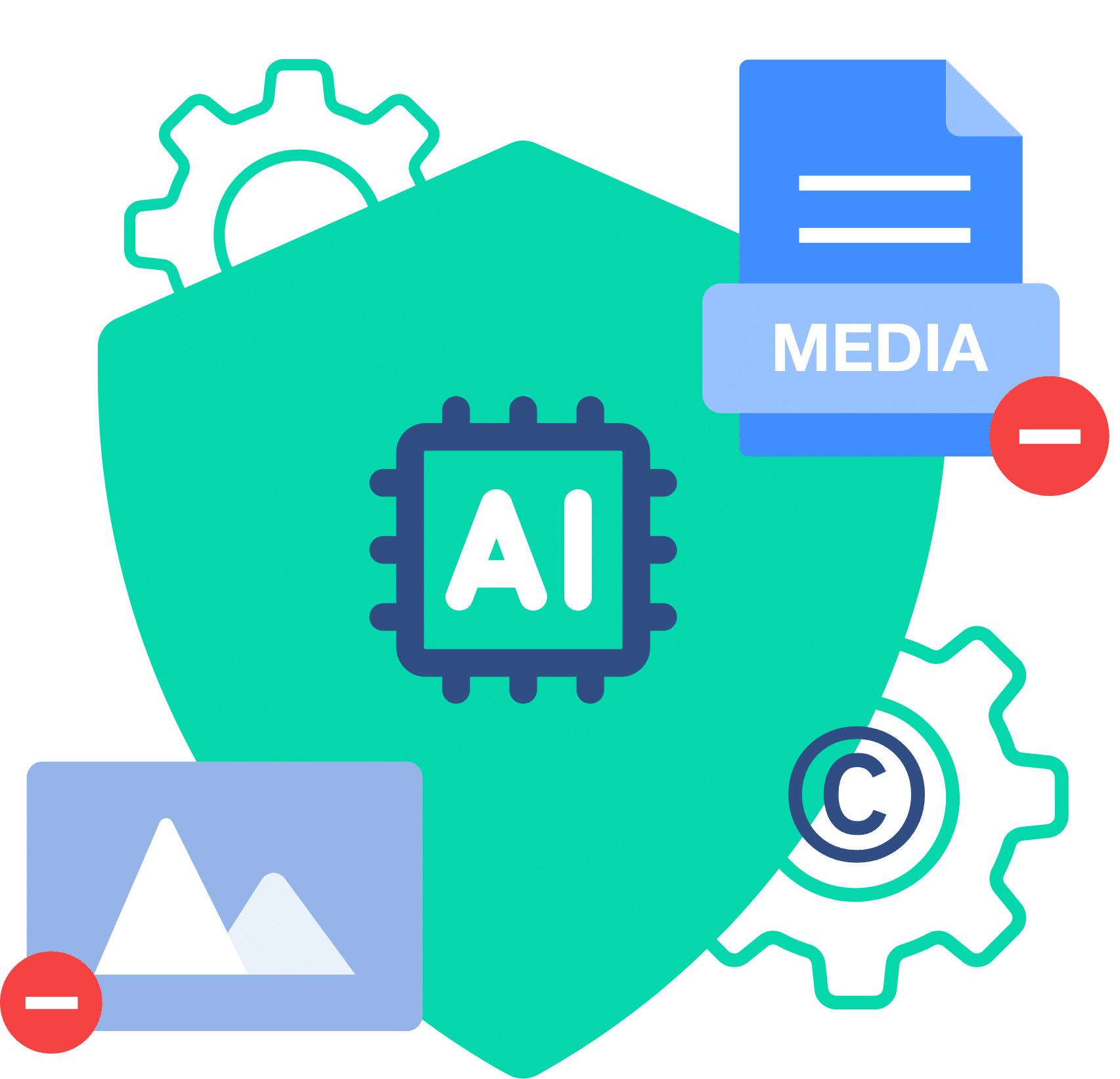
However, the emergence of generative AI also brings with it complex and pressing risks that creatives need to be aware of.
The use of Open AI and other generative art or image technologies carries significant implications due to the potential for generating content that might inadvertently infringe on existing trademarks, as models are trained on content accessible across the entire internet.
In this blog, we will delve into the ways generative AI can be utilized by creative and marketing teams today, and the related implications for content creation and digital asset management (DAM) that users should be aware of as this technology evolves.
We’re Entering Generative AI’s Napster Era
Let’s start off by acknowledging that this is a movie we’ve seen before. Remember Napster?
When transformative technologies emerge, they rapidly gain users before the law has a chance to catch up.
In 1999, this platform sent shockwaves through the music industry with technology that allowed users to contribute to, search for, and download digital content. Virtually overnight, millions of users were engaged in the exchange of digital files, with a significant portion of that content being copyrighted material.
Then, the law caught up.
Napster’s impact led to significant changes in copyright law and intellectual property regulations, contributing to the strengthening of copyright enforcement, and highlighting the need for digital rights management (DRM) technologies.
The law catching up with generative AI is the reality of what’s to come.
Right now, generative AI is like a party that’s in full swing – but the cops are starting to arrive.
On August 18, 2023, a U.S. federal court ruled that AI-generated artwork cannot be copyrighted on the grounds that copyright law only extends to human beings.
And just this October, big names in AI have pledged to add metadata and watermarks to AI-generated images so that they can be identified as machine-made.
These developments come amid AI companies taking some heat for how they’ve trained these models to generate content from billions of existing web sources, including images and written content, generally without the creators’ knowledge or consent.
A group of prominent novelists joined a legal battle against an AI company, accusing the company of infringing on authors’ copyrights, claiming it used their books to train its chatbot.
Additionally, artists have launched a lawsuit against AI art generator tools, alleging that these companies have infringed the rights of “millions of artists” by training AI tools on five billion images scraped from the web without consent.
Creative and marketing teams leveraging this technology need to be aware as well.
The recent federal court ruling means that any content generated by generative AI cannot be copyrighted by your company. Further, depending on how you’re using generative AI, there’s a chance you could be inadvertently using work that is trademarked.
Finally, if you’re using a DAM that leverages AI, you want to be sure you understand how your own information is being used to train the algorithm.
So, let’s have a look at what to be aware of regarding the typical use cases for leveraging generative AI for content creation.
Generative AI Use Case #1: Inspiration & Ideation
Generative AI can be a goldmine of inspiration, so a common use case is utilizing the initial concepts it offers to fuel brainstorms and help move things along when you’re lacking ideas.
Here’s a basic example (that many of us have likely tested out by now).
Imagine you’re planning a campaign around the launch of a new clothing line – but you’re stumped on ideas for social posts. With a prompt about the campaign and what type of posts you want, you could get a generative AI tool to suggest 10 post ideas for Instagram.
To take it one step further, if you were stumped on what color schemes and design elements you wanted to use for graphics, generative AI tools could provide suggestions based on current trends and historical data.
The beauty here is that while the AI is actively contributing to your creative process, issues with trademarks are less prominent. This is because you’re not taking any final assets that the AI created, or publishing the AI’s output with your company’s name on it.
Implications of Using AI for Inspiration
Privacy
Even when utilizing generative AI tools for inspiration, you need to be aware of what information you feed this technology. Due to how these platforms use data for training models, the privacy of what you input is not guaranteed and there’s potential to unintentionally expose data.
Being mindful of what you input into these engines is crucial for decreasing the risk of data exposure and noncompliance in the age of AI-driven creativity. As a rule of thumb, confidential or personal information should not make its way into any AI tools to protect the privacy of employees and the organization.
Generative AI Use Case #2: Production of Final Content
The second use case is where generative AI becomes not just an idea generator but a content creator. Generative AI has the capability to produce social media images, blog post headers, or even video clips.
So, to go back to our previous example, a marketing team could use this technology to produce 10 Instagram posts, including copy and graphic components and push these assets out to their audiences.
Of course, this would save so much time on content creation. However, this use case for generative AI brings about a lot more to consider.
Implications of Using AI for Production
Brand Compliance
To ensure brand compliance internally, teams should ensure that any AI-generated assets are treated no differently than traditional content. This means they should go through the same review and compliance workflows as any other content your business creates.
Rights Infringements
Where things get even trickier is that the process behind how AI-generated assets are created is not transparent. Generative AI models are often highly complex making it difficult to trace what was used to create the text, visual, or audio source.
Why is this a problem?
When AI generates content, it may produce work that closely resembles someone else’s. Without a clear understanding of where this inspiration was sourced from, it’s challenging to establish how to handle proper attribution and ownership credits. This could make it difficult for the content to meet an organization’s legal and compliance requirements, or pass through the review and approval process.
Further, using generative AI to create final content brings with it the risk of unintentional trademark infringement. If an AI inadvertently generates content that closely mirrors trademarked material, you might unknowingly be in violation of trademark law.
Your Generative AI Vendor Matters
There’s no denying these implications seem intimidating. However, the complexity doesn’t negate the creative and productivity benefits that generative AI tools can bring to the table.
It comes down to navigating AI platforms with awareness.
One factor to be aware of is that your choice of AI provider, and specifically whether that AI uses open or closed training data, can significantly impact the results and potential legal challenges you may encounter.
AI: Open Training
AI that uses open training data refers to AI models and systems that source information from a vast array of publicly available data on the internet, essentially taking inspiration from everything it can get its virtual hands on. It freely draws from texts, images from the web, and other sources without rigid boundaries.
The advantage is that it offers a wealth of creative opportunities. With access to a broad spectrum of sources, your output is limited only by the wealth of data the AI has absorbed.
However, leveraging AI tools that use open training data to create finalized assets is where the vulnerability to accidental copyright and trademark infringements is much higher.
As previously mentioned, contemporarily AI that uses open training data cannot provide the exact origins of the content it generates, making it difficult for you to be sure about whether or not it’s drawn inspiration from trademarked imagery or copyrighted material.
The Alternative: AI Closed Training
AI that uses closed training data operates within defined boundaries, using a curated dataset, and doesn’t access external data sources. This can place a higher degree of control in the hands of users, allowing them to shape the generated content by limiting what the AI can access and pull from.
So, an alternative to using AI that uses open training data is using an AI provider that is able to provide an algorithm that specifically pulls from your existing content, providing a more controlled experience.
An AI model that uses closed training data has the following characteristics:
- Trains only on your curated dataset
- Learns solely from your content during training
- Generates content exclusively inspired by your dataset
- Avoids external data sources during the content generation process
The advantages include reduced risks of unknowingly infringing on trademarks, copyrights, or using inappropriate content. It also allows for a more controlled and tailored content creation process, helping to maintain a consistent brand identity across content.
However, it’s important to note that the trade-off is a potential limitation in terms of creative diversity. By not drawing inspiration from a broader range of sources, the AI may generate content that is less innovative compared to a model that is exposed to billions of data points.
Companies may opt for AI that uses closed training data when they prioritize the protection of their brand’s image, content consistency, and legal compliance over exploring a broader creative spectrum.
But, the decision should be made thoughtfully, considering both creative potential and legal prudence.
AI & Generative AI in Tenovos
There are a number of AI features currently available within Tenovos that have been proven to boost productivity with little to no risk for users.
AI can play a pivotal role in enhancing DAM, particularly in the context of content enrichment, tagging, predictive asset recommendations, translation and localization, and video and audio transcription. These features provide significant time savings through streamlining asset management, improved content discoverability, and an enhanced user experience.
When it comes to generative AI, any and all of the use cases discussed are possible within the Tenovos platform through our flexible APIs that allow for integrations with any AI provider. This empowers organizations to harness the capabilities of generative AI with the provider of their choice, giving clients the freedom to select the AI that aligns best with their privacy and content creation needs.
With Great Power Comes Great Responsibility
In conclusion, generative AI is a powerful tool for content creation, but it should be employed carefully.
As we’ve seen with past technology revolutions, legal frameworks will eventually catch up to regulate its use. Currently, AI companies face legal challenges, but creative and marketing teams should also exercise caution to avoid inadvertent trademark infringements.
If you’re using generative AI for production, your choice of AI provider can help you exercise caution. However, there is a trade-off. While using closed AI that draws inspiration from your existing content is less risky for trademark infringements, open-source AI offers wider creative opportunities but necessitates more awareness.
In the case of DAM, evaluating the AI provider that is leveraged on the platform is crucial too, to ensure that the use of AI aligns with the privacy and compliance needs of your business. This is why Tenovos provides organizations with the flexibility to choose their preferred AI provider.
However you choose to harness generative AI’s power, it requires a careful balance between technology and human oversight. Research and awareness are key to unleashing its potential for content creation and digital asset management while upholding legal standards.

